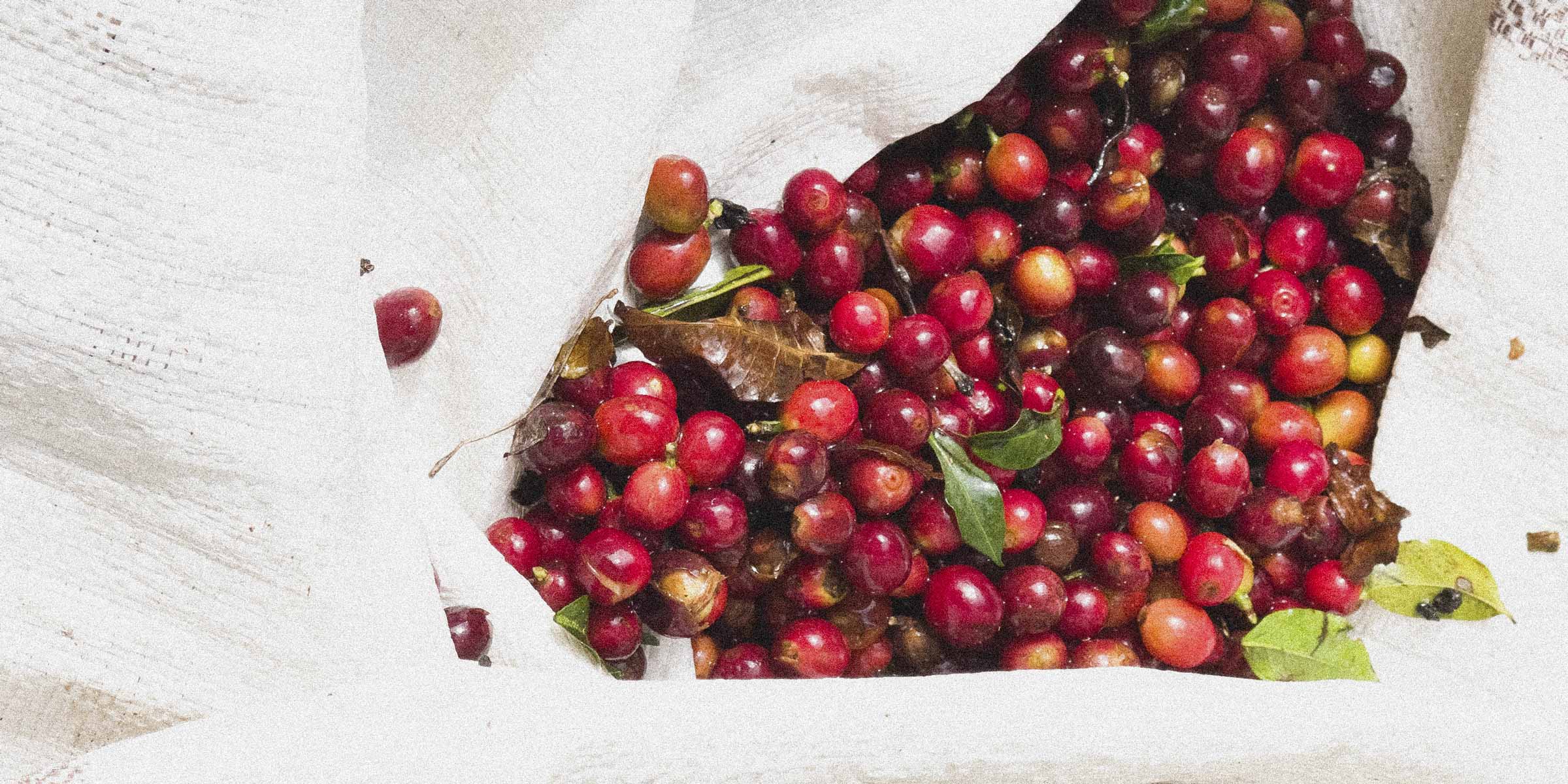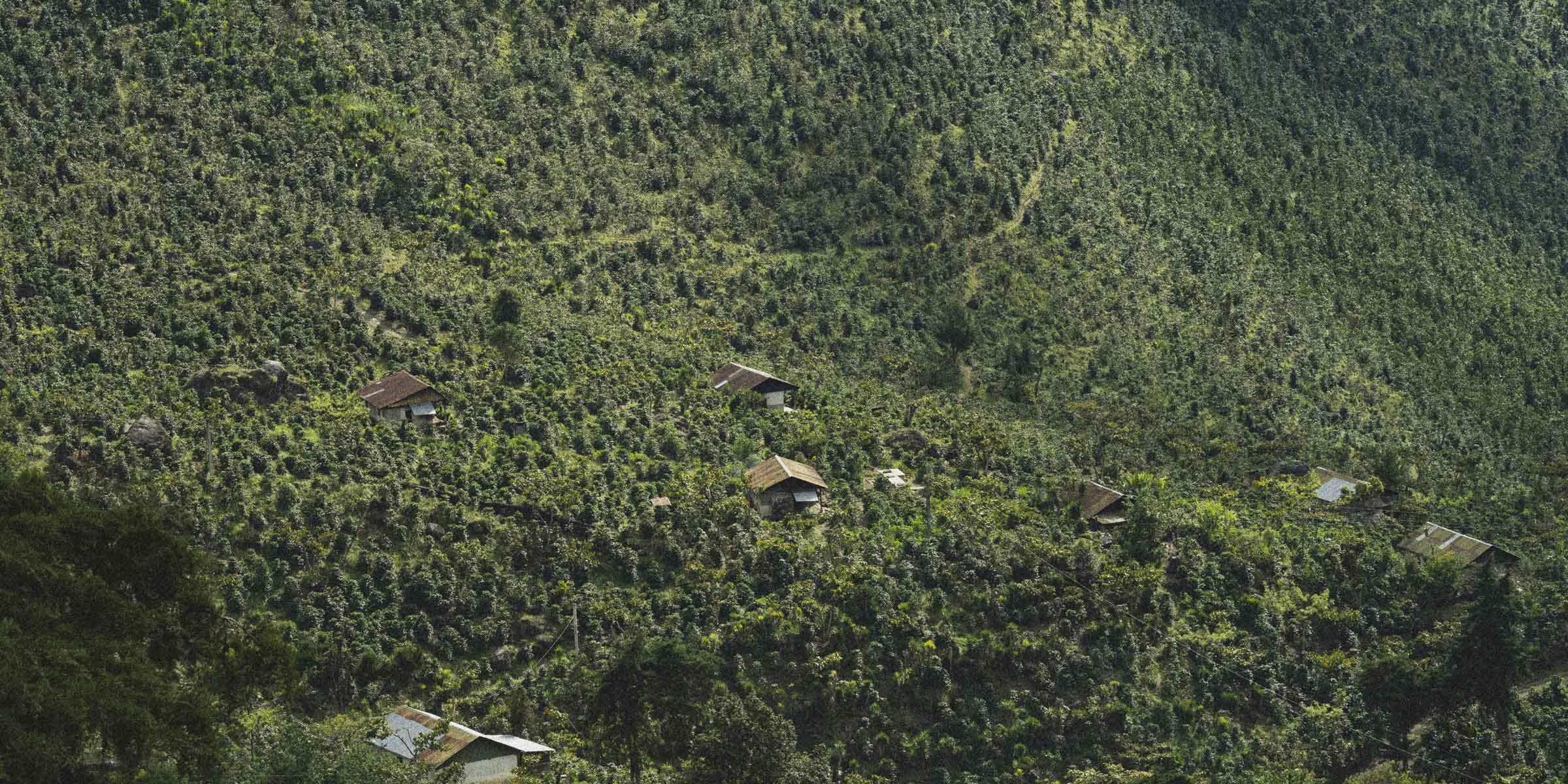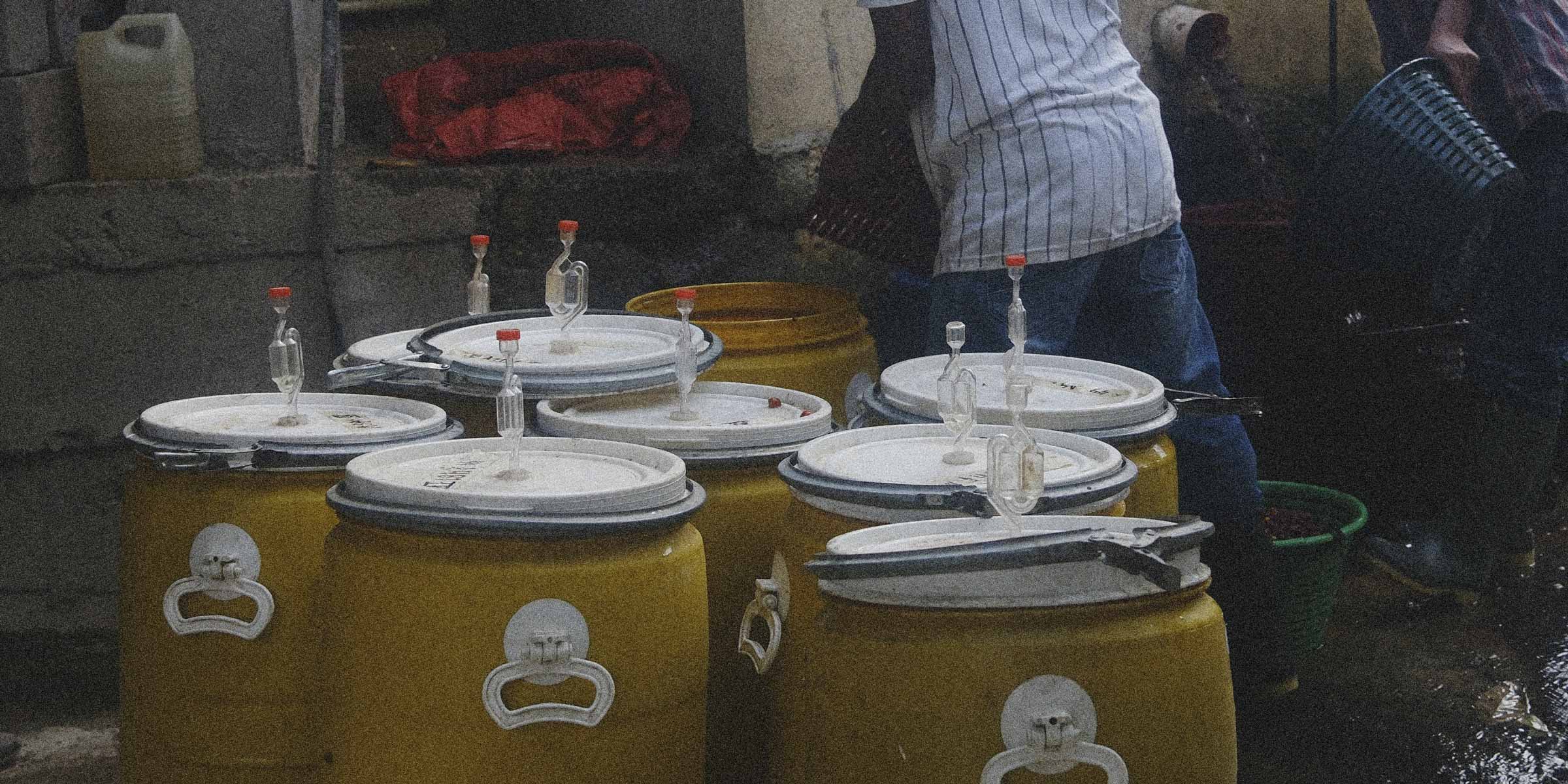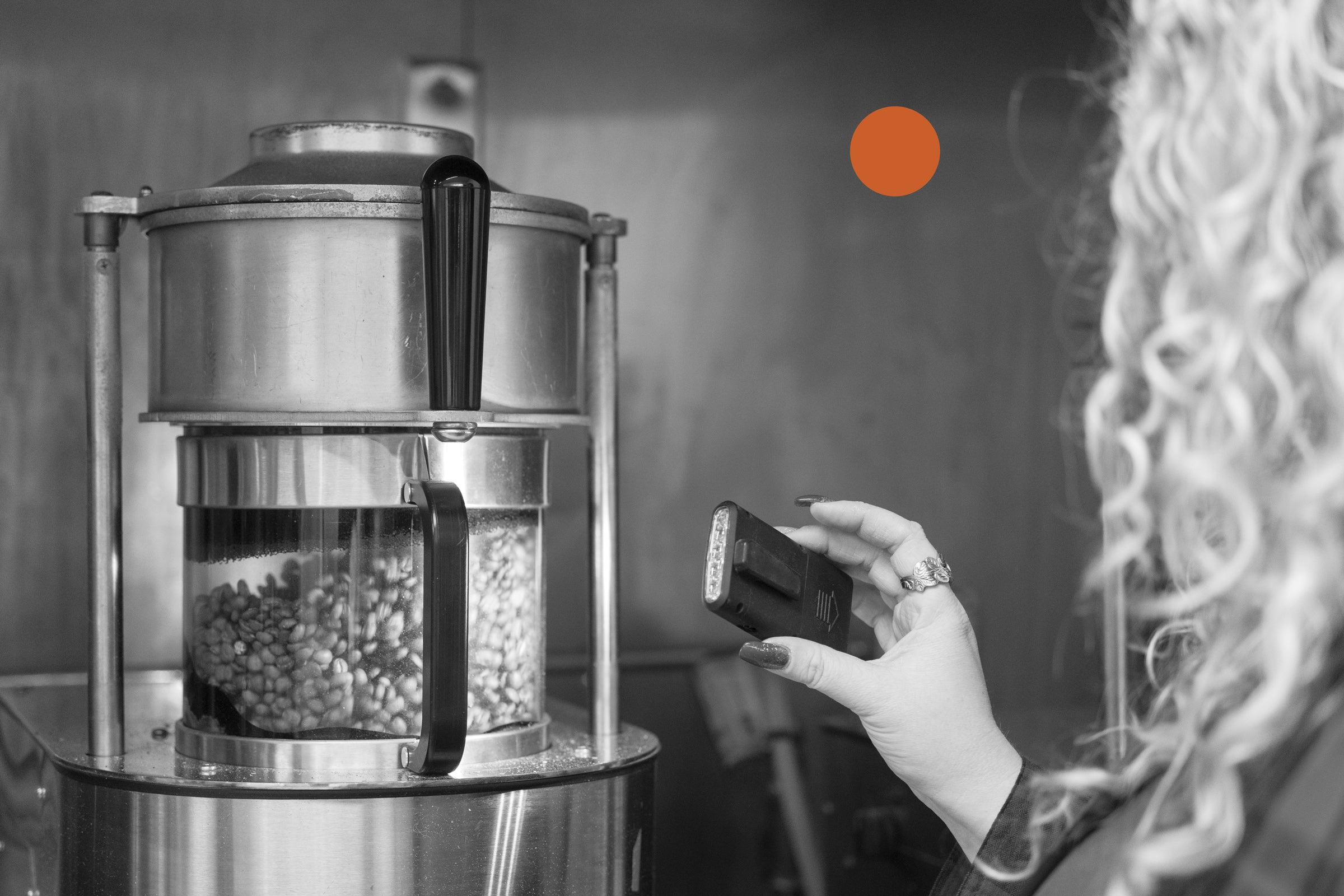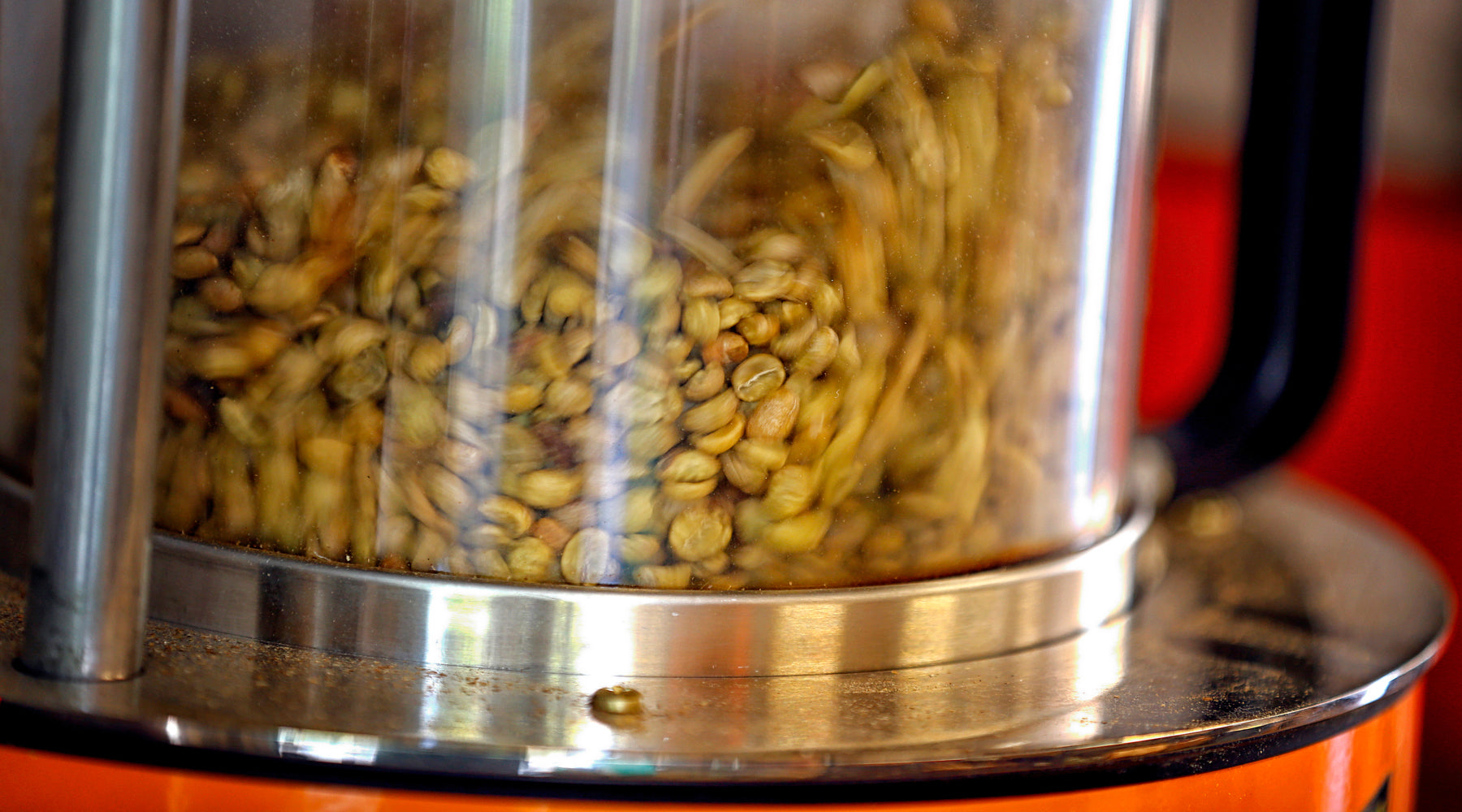Start with the basics •
Read our coffee 101 articleCoffee Roasting Guide: How Coffee Roasting Transforms Flavor
The Chemistry of Transformation
When we roast coffee, we're not just cooking beans. We're triggering chemical reactions that create over 800 different flavor compounds, more than wine, more than chocolate, more than almost any other food product we consume.
The process starts simple: heat drives off moisture. But once the internal temperature of the bean passes 300°F, things get interesting. Sugars and amino acids start combining in what's called the Maillard reaction, the same process that browns your steak and gives bread its crust. This reaction alone creates hundreds of compounds that contribute to coffee's body, sweetness, and complexity.
As temperatures keep climbing, sugars caramelize, acids break down, and the cellular structure of the bean cracks open, releasing trapped CO2 and aromatics. Each process adds something essential to the final cup.
Building Flavor Through Stages
The journey from green to brown happens in four distinct stages, and each one matters more than most people realize.
The drying stage might seem straightforward, you're evaporating water. But rush this stage with too much heat and you'll scorch the outside while the inside stays wet, creating burnt-grain flavors that nothing can fix. Take too long, and you won't have enough energy in the system for proper development later.
The browning stage is where most of the work happens. This is prime time for the Maillard reaction, where coffee's complexity develops. Stretch this stage out and you'll get heavy body with layered flavors. Rush through it and you'll end up with tea-like, simple coffee. The difference between 3 minutes and 6 minutes here completely changes the same beans.
First crack, that popcorn-popping sound, signals the development stage. Now multiple reactions happen at once. Chlorogenic acids (the metallic, bitter ones) break down while pleasant fruit acids degrade more slowly. Stop too early and you'll taste grass and metal. Go too long and all those origin characteristics disappear into generic "roasted" flavors.
The final stage determines what most people call "roast level", but color is just one small piece of the puzzle.
Why Color Lies
Here's what drives us crazy: two coffees can be the exact same color and taste completely different.
We can roast the same beans to medium-brown in 8 minutes or 13 minutes. The fast one will be bright, sharp, and simple. The slow one will be heavy, syrupy, and complex. Same beans. Same color. Totally different coffee.
This is why judging coffee by "roast level" doesn't work. A quickly seared steak and a slow-roasted one might both be medium-rare inside, but they taste nothing alike. Same principle applies to coffee.
The Origin Factor
Not all beans want to be roasted the same way. Ethiopian coffees with their delicate florals need gentle treatment, fast and light to preserve their character. Colombian beans with their balanced profile can handle more aggressive heat and longer development. Natural processed coffees already have sweetness that can turn funky if pushed too hard.
Understanding these differences separates good roasters from great ones. It's not about following a recipe; it's about knowing what each coffee needs.
Finding the Sweet Spot
At Sagebrush, our philosophy is simple: we roast to highlight the flavors inherent to the coffee, not to showcase our roasting skills. When you're working with high-quality beans from producers who've spent months perfecting their craft, the last thing you want is to bury their work under char and ash.
This means finding that point where bad acids are gone but origin characteristics remain, where sweetness develops without becoming bitter, where body builds without muddying the flavors. It's a balancing act that changes with every origin, every processing method, every harvest.
Understanding roasting takes the mystery out of coffee. That cup in your hand isn't just "light" or "dark", it's the product of hundreds of decisions and chemical reactions, each one affecting what you taste.
The more you understand about how roasting works, the better you can appreciate what's in your cup. Whether you're roasting at home or just drinking coffee, knowing the process helps you recognize quality when you taste it.
Once you get this, you'll never look at coffee the same way again.
The Coffee Journey
Explore all that goes into your morning cup
